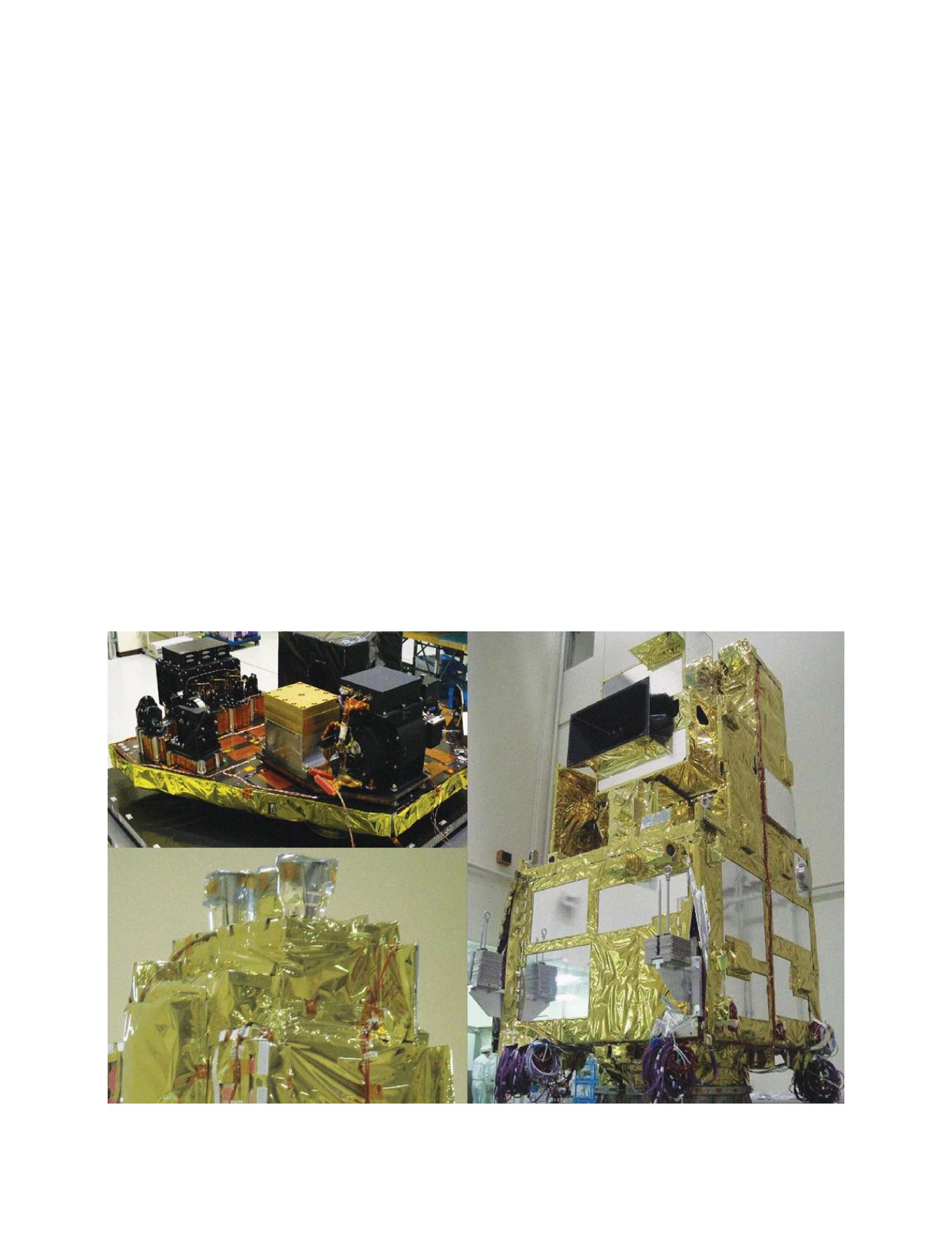

[
] 208
After the verification of its accuracy, GOSAT will
finally start its assigned mission to acquire data.
Besides GOSAT, there is another greenhouse gas
observation satellite in plan, the Orbiting Carbon
Observatory (OCO), from NASA/JPL in the United
States. It is scheduled to be launched in 2008, to
simply monitor CO
2
.
Having similar objectives, OCO and GOSAT share
similar technological issues, and as such, some coop-
erative projects are being planed. For example, OCO
and GOSAT instrument data will be exchanged and
calibrated for their accuracy prior to launch, to assign
common observation standards. JAXA and NASA are
also considering possibilities for comparing post-
launch data and conduct calibration experiments
together as well as discussing shared data utilization.
A similar type of cooperation is also in development
with Europe, where JAXA is planning to provide
European scientists with GOSAT data via the European
Space Agency (ESA).
International cooperation is essential, especially for
Earth observation satellites. When monitoring the
Earth from space, not just Japan but the entire planet
is automatically covered. In that sense, JAXA would
ask worldwide organizations to make great use of
GOSAT data, and requests feedback from users to help
improve observation performance.
in reality, there are no standardized means to measure greenhouse
gas emissions, and the amount of emissions reported is based on
self-declaration. The amount is calculated based on assumptions
about such as the volume of the countries’ oil consumption, car –
driving distances and industrial gas emissions. Therefore if GOSAT
observation makes it possible to estimate greenhouse gas emission
per continent or large country, GOSAT observation data would be
utilized as a means of verification.
The last mission objective is to develop and establish advanced
technologies essential for precise greenhouse gas observations.
GOSAT is a joint project by the Japan Aerospace Exploration
Agency (JAXA), which is responsible for the satellite and sensors
development; Japan’s Ministry of the Environment (MOE), and
the National Institute for Environmental Studies (NIES). MOE
and NIES are in charge of data utilization.
Utilizing the JAXA acquired data
NIES is responsible for analyzing the global distribution of CO
2
and methane concentration, and the regional volume of absorp-
tion and emissions. It may take some time before preparing the
data for distribution; however, free-of-charge GOSAT global obser-
vation data will be distributed for scientific use within a year of the
launch.
GOSAT is scheduled to be launched in 2008 by the H-IIA launch
vehicle. During the first three months all functions of the satellite
will be tested. Then in the following three months, data will be
collected intensively and compared with ground observation data.
Top left: Thermal and Near Infrared Sensor for Carbon Observation – Fourier Transform Spectrometer (TANSO-FTS) Engineering Model. Bottom left: Thermal
and Near Infrared Sensor for Carbon Observation – Cloud and Aerosol imager (TANSO-CAI) Engineering Model. Right: Structure and thermal model
Photo: JAXA
S
OCIETAL
B
ENEFIT
A
REAS
– C
LIMATE
















